Currently, we live on 40 acres of land in an off-grid RV. When we decided to get chickens, we knew that we wanted to raise them from chicks. There’s a huge difference between raising chickens from chicks and purchasing them when they’re adults. Personally, I don’t want to guess how the chickens were raised by someone else for the first 3 to 9 months of their lives; I want full control over that.
The issue we ran into was not being able to supply a heat lamp for them — given that we live off-grid on solar energy alone. While we do have an onboard generator, it’s impractical to run it for a month straight just to power a heat lamp. At this time, we only have four batteries which supply around 210 amp-hours (AH) of usable energy. A heat lamp takes 250 watts to run on our 12-volt batteries, resulting in the use of 20.8AH of energy.
By the above math, if we were to run the heat lamp for 10 hours straight, it would consume all 210AH of energy we have. But of course, we have other things that use our energy, and completely draining batteries really isn’t a good idea. Plus, chickens need the heat lamp for longer than just 10 hours a day. Even if we only ran it at night, that’s about 10 to 12-ish hours of needing to run it full time. A heat lamp just wasn’t going to work.
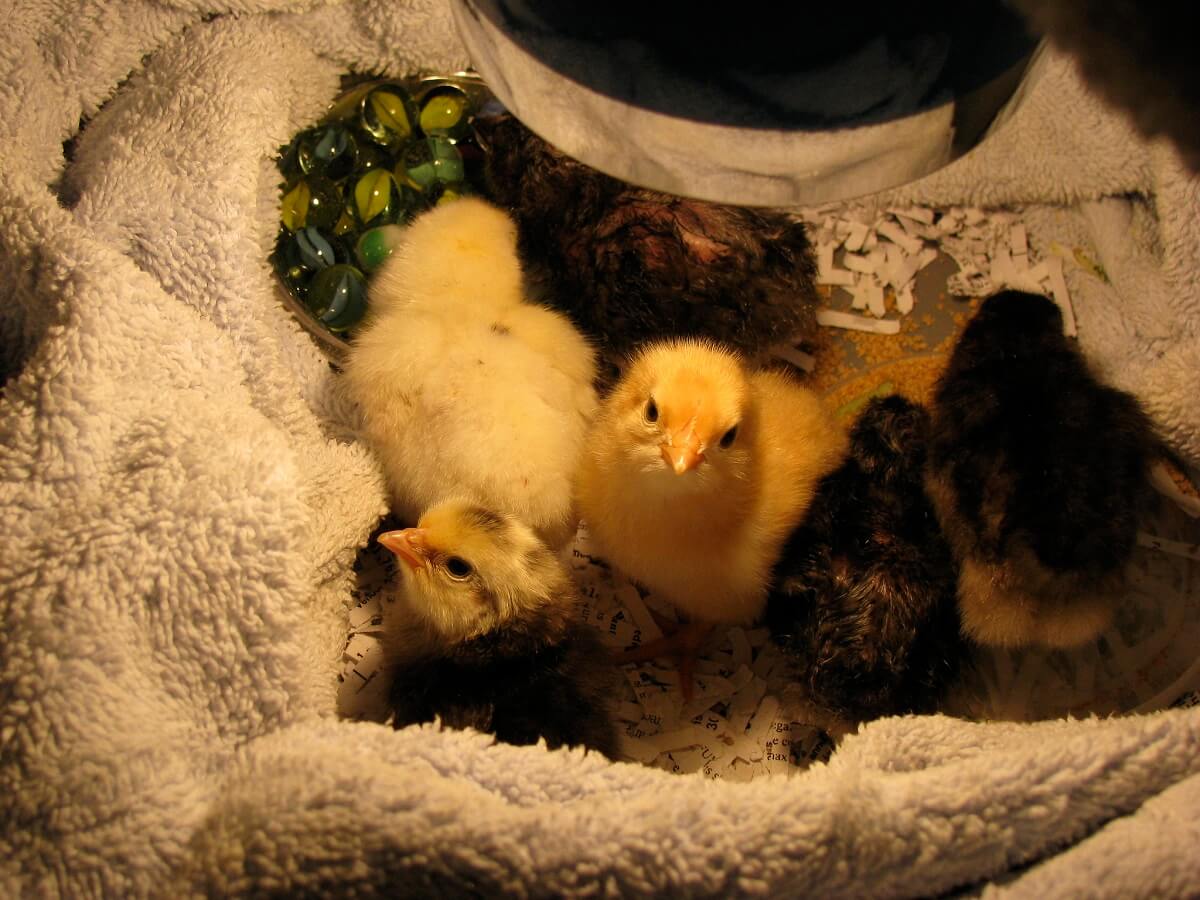
I knew there had to be a way to raise chicks without a heat lamp. What did they do back in the day when heat lamps weren’t an option (let alone electricity)? While the hen was usually the go-to source, many hens reject their chicks or are simply too broody to raise them properly.
Besides, I was already skittish about using a heat lamp. We used a heat lamp on chicks that we had raised in the past before moving to full-time RV life. One day we went to the grocery store and returned to a house full of smoke because the heat lamp had fallen and caught the pine shavings on fire. The smoke inhalation killed three of our chicks. It was not an experience I wanted to relive.
Related Post: How To Hatch Eggs With Your Hens (Without An Incubator Or Brooder)
As I dug into the possibility of not using a heat lamp, lo and behold, I discovered a wide number of people not using heat lamps for a variety of reasons, but mostly because it just wasn’t necessary and there were better options.
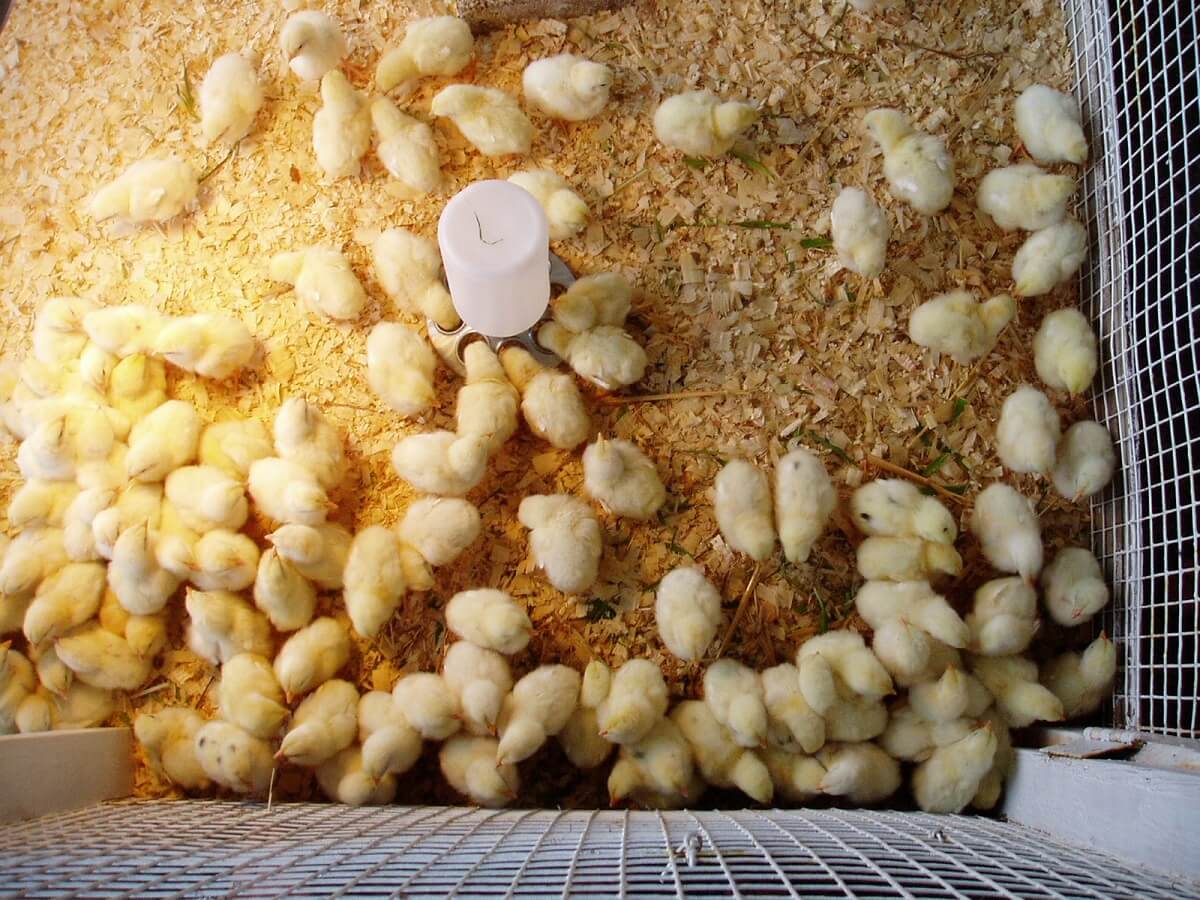
Chicks don’t actually need a heat lamp. A heat lamp is easy because you just set it up, turn it on, and walk away. But they don’t need it. In fact, the lamps are actually a bit too hot for chicks.
Chicks need to be kept at a temperature between 70 and 95 degrees Fahrenheit during their first few weeks of life. There’s a big debate on the actual temperature that chicks need to be at, but through our experience and research, 70 to 95 has been perfect. Around six weeks, their feathers have grown in and they’re ready to be moved outdoors.
There are so many options to keep your chicks warm without a heat lamp. Let’s take a look at a few.
Line The Box With Mylar
Line the outside of a box with mylar (like the mylar from emergency blankets) or reflex. Place a large bedding of straw, feathers, paper, or other types of natural bedding materials.
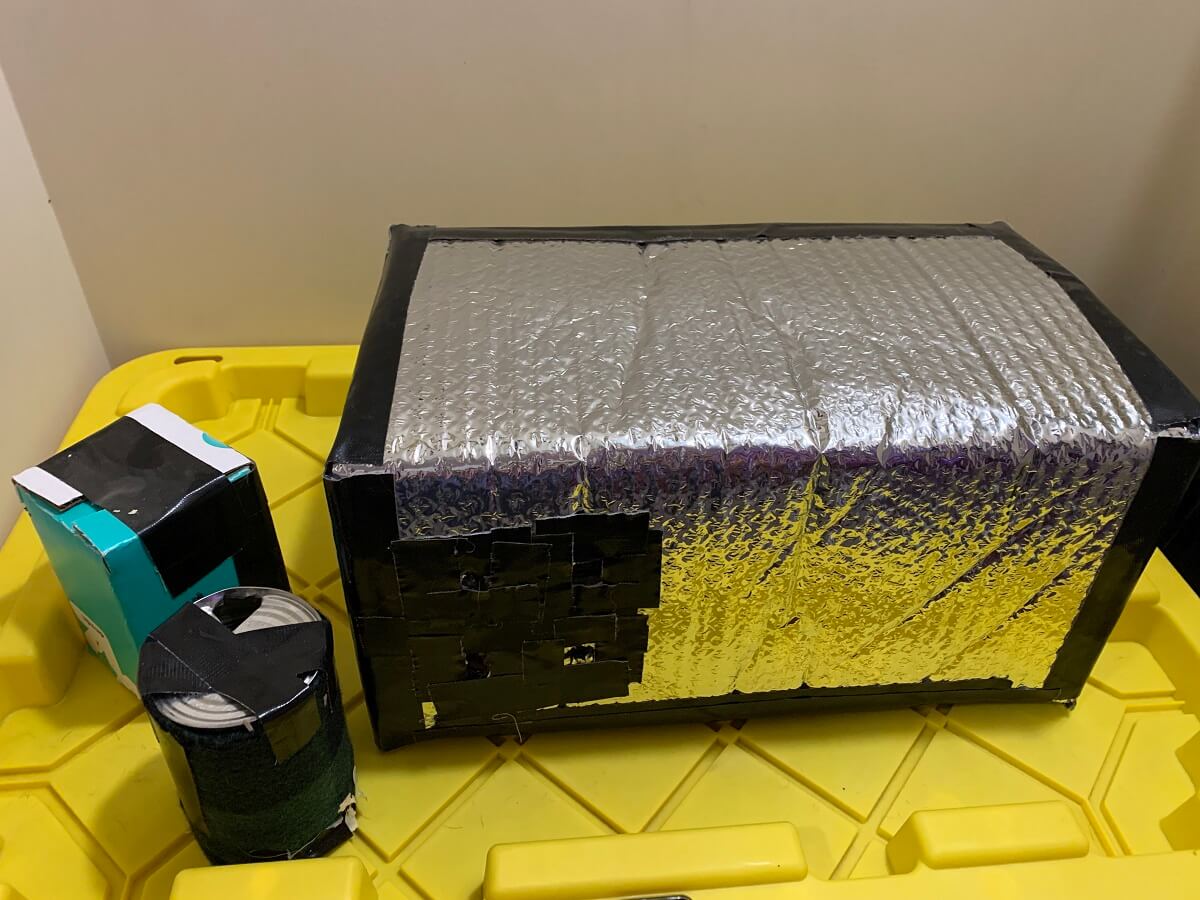
Set your chicks in the bedding materials and place the insulated box over the chicks. Make sure there’s plenty of air holes and that they still have access to their food and water. They should be able to walk around freely and huddle up as needed.
Hand Warmers
Hand warmers are another option, though this could be expensive as hand warmers will only last for so long.
Sock Filled With Rice
Fill a few socks with rice, warm them up (in the oven at a very low temp or in a microwave) then place the sock in their box. They’ll huddle around it and will remain warm.
Hot Water Jugs And Fleece
Get a plastic gallon container. Fill it with warm water that isn’t too cold or too hot. Some use tap water. I use boiling water and then just mix it with half room temperature water so it usually comes out to a perfect temperature.
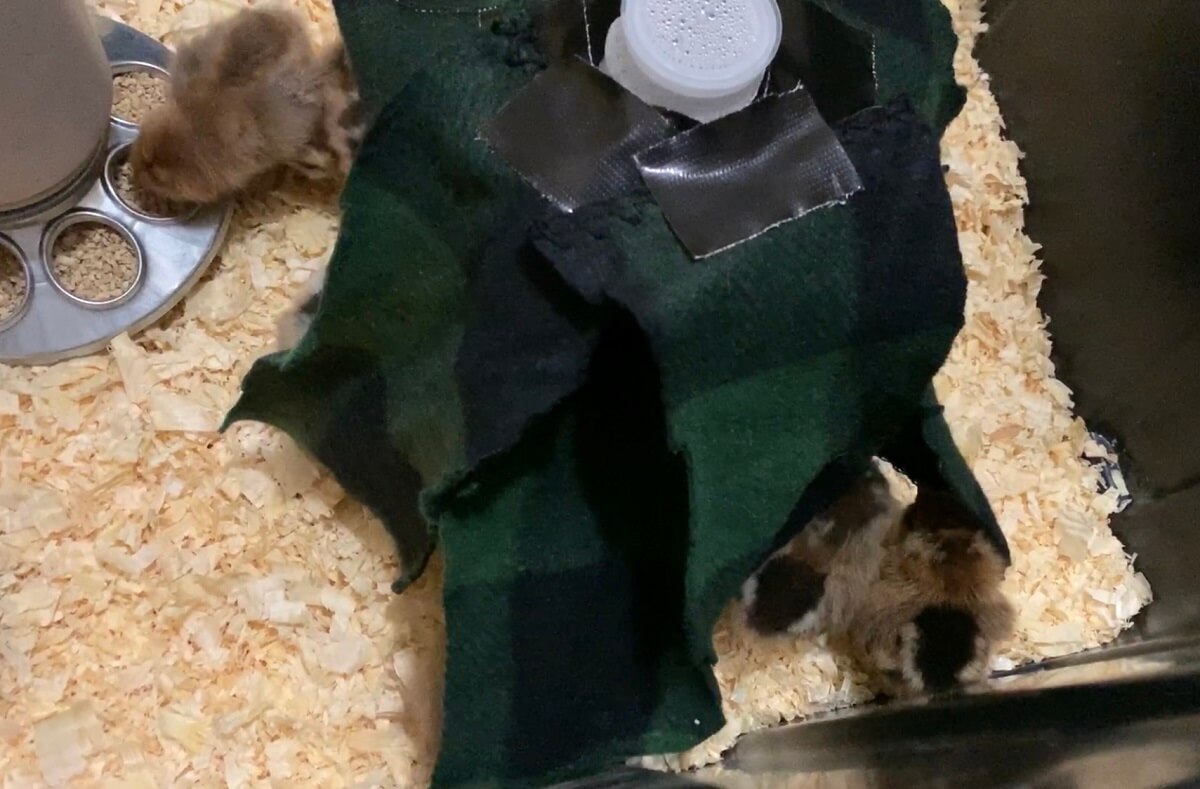
Cut up some strips of fleece and drape them on the outside of the container. The chicks snuggle up between the fleece and the container and absolutely love it. I re-warm the water every three hours or so.
Hot Water Bag And Fleece
Place some warm water in a bag, wrap it in fleece, and place it in their box. They’ll snuggle up around it.
Tin Can And Fleece
I use this option for night time only, but it could actually be used for daytime as well. Make a small hole in the top of an empty, clean, tin can. Wrap it with fleece. Fill the tin can with boiling hot water, then place some cardboard around the can, and place it inside the box. It radiates A LOT of heat and the chicks absolutely love it. It also retains a lot of the heat, especially if it’s in an insulated box.
Related Post: 8 Of The Best Egg Laying Chickens For Daily Farm Fresh Goodness
The inside of our RV during the day is usually 80-plus degrees so they’re very happy during the daytime with the gallon jug of water. We keep a temperature gauge inside their box and check it often to make sure it’s within the right range.
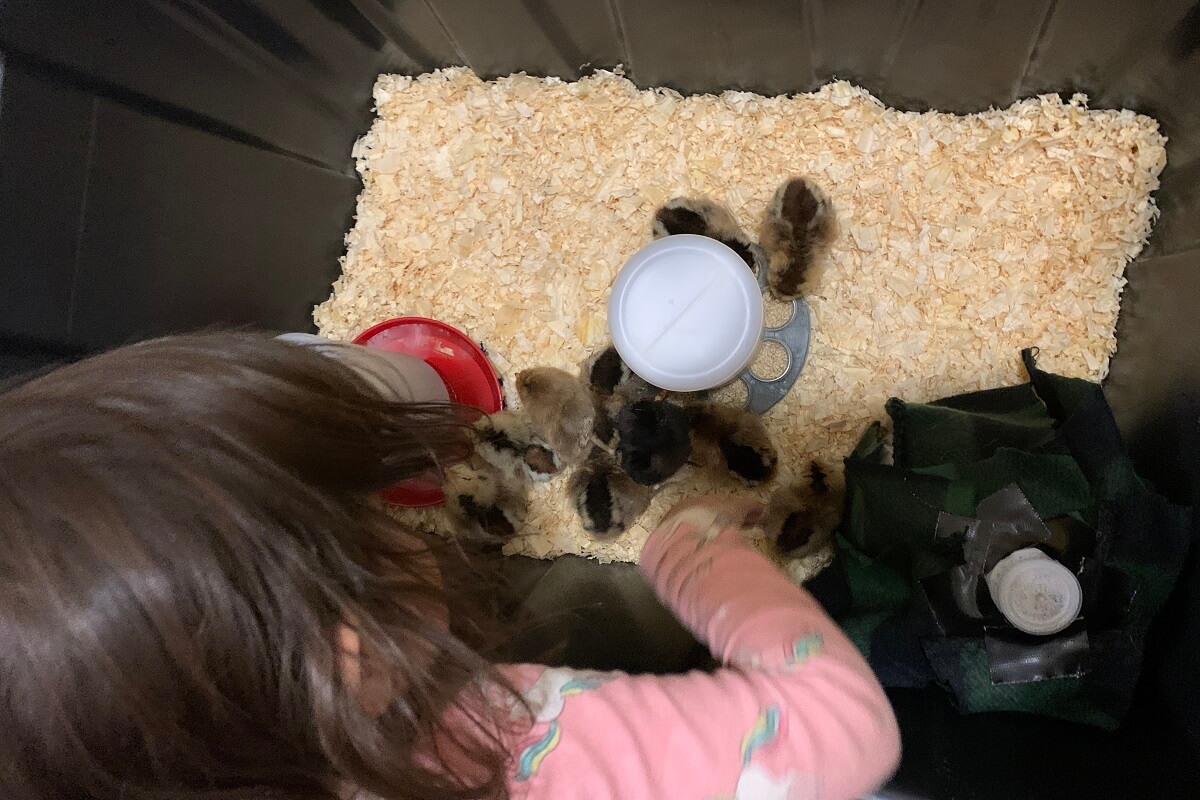
You will know when your chicks are not happy. They will be very vocal about it and will show signs of not eating, not playing, and not acting like chickens should be acting. They should be scratching, pecking, playing around, and having a good time. Also, make sure to check their butts. If you see any crusted poop on their feathers, clean it off immediately as it can clog them up, and eventually take their life.
This is how we’ve raised our chicks and they’re all happy and healthy. People have been raising chicks off-grid without a heat lamp for many years, and not only is it safe, but it’s also effective.




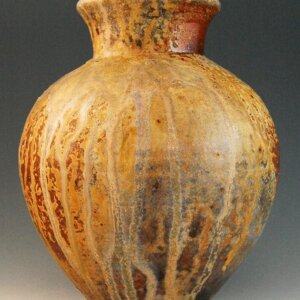



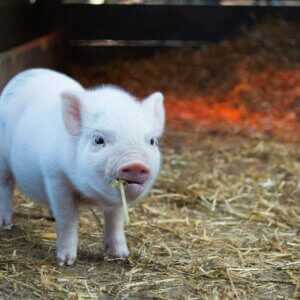




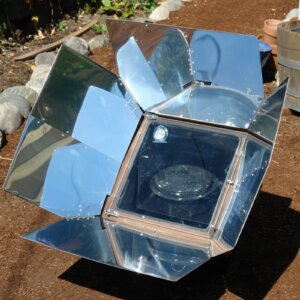












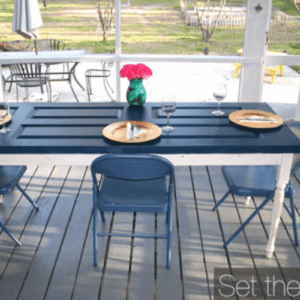
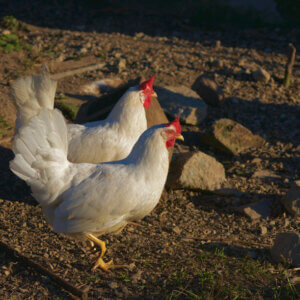







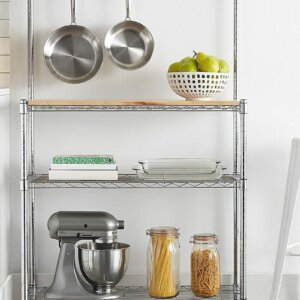
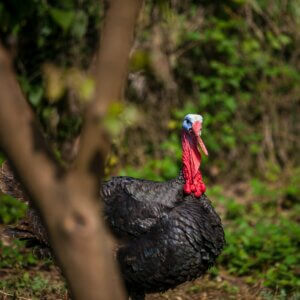





After how many hours does the tin can become cold
How long can tin and fleece make them warm and what should be temperature of rice filled in sock
I heat the sock in the microwave for about 2 and a half min and it keeps it warm for about a hour.
I personally lay a heated blanket / heating pad in or over the brooder and that helps to keep the chicks warm!
Thanks, great tips. I did end up going with a brooder kit setup (heat lamp/lights) etc. For convenience but these options definitely worked.
I actually only use the tin can’t and gallon methods for the first 3 weeks because I always raise at least four chicks at a time, as long as it’s not too cold after 3 weeks those four chicks can keep each other warm until they finish feathering, then again I live in Florida so even in summer it’s warm enough to raise chicks without a brooder 😅
Native Floridian and yeah same, I raise two at a time but there in the outdoor brooder by the age of 2 week. I usually raise 2 at a time but I leave a silkie in with em, Well tempered so they let my chicks snuggle up to them
Can I get some more specific ways to make the tin can heater idea?
Not sure what you mean about the tin can method. If it’s empty, how do you make a small hole in the “top”?
We don’t have electricity and this would be the method we would use. Please help me understand how to do this method!!
Thank you
☺️
Thanks for the tips! I didn’t even think about needing to watch for the dried poop!
How about just a pot with a lid? Probably easier than the tin can.
Thanks for the help
The best ever is just an old fashion hot water bottle. It will last all night ( no getting up to heat water) you can make it pretty warm and wrap it with a hand towel. It is also very easy to sanitize so you can use it over and over for many other uses and for many years.
I already have a few rice socks which I use for heat packs for my back and my feet at night. So I warmed up one in the microwave and put it in with the three new chick’s I got by surprise today. I got three Road Island Reds. I was on the other side of the county and had to hurry to get them picked up. I got home and had to find something to put them in. Then, they were cold and needed heat. I heated the rice sock up and put it in a shallow tote after I covered the bottom with a couple layers of paper towels. I put the rice sock on top of the paper towels and then I put a reflective shopping bag over to hold the heat closer. Then I showed them where the heat is located. They are huddled under the reflective bag by the rice sock and quiet. They had been quite vocal before that. I am quite happy now. Thank you for the reminder to use something I have on hand.